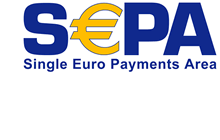SEPA harmonises the way we make and process retail payments in euro.
SEPA enables customers to make cashless euro payments to anyone located anywhere in Europe, using a single payment account and a single set of payment instruments.
If you travel from one euro area country to another, you can easily buy something with euro in cash. But making cashless payments outside your home country, for example with a debit card, is more difficult. This is due to technical, legal and market barriers stemming from the period prior to the introduction of the single currency. SEPA aims to overcome these barriers. The result will be a single market for retail payments in euro.
The single market will extend beyond the euro area and even the European Union. SEPA is an initiative of the European payments industry. The Eurosystem, the European Commission and other institutions play supporting roles and define the objectives.
Prior to the introduction of the single currency, each country developed its own models and practices for cashless payments. As a consequence of this diversity, the steps that need to be followed in order to adapt to SEPA are not the same for all countries. National fora have been established to deal with the special features of each country. In addition, individual national migration plans have been drafted outlining the measures that need to be taken in each country in order to process SEPA payment instruments.
See below some information for each country regarding national fora, migration plans and reports, and other links regarding SEPA – SEPA_community_fora_201107
(All countries that have adopted the euro will migrate from national payment instruments to SEPA payment instruments. This change will affect both domestic payments as well as payments made across borders to other SEPA countries. The essence of SEPA is to eliminate differences between national and cross-border payments and thereby create a Single Euro Payments Area with a harmonized set of payment instruments.
Banks in non-euro countries that are part of the European Union or the European Economic Area, plus Switzerland, have chosen to be part of the SEPA so that their citizens and businesses will be able to use SEPA instruments for euro payments. The non-euro countries are free to use the SEPA instruments for payments in their own respective currencies.)
Features of the SEPA Credit transfer include:
- There is SEPA-wide reachability – any customer can be reached;
- There is no limit on the value of the payment;
- The maximum execution time is three business days (from 2012 one business day);
- The scheme is separated from the processing infrastructure;
- IBAN[6] and BIC[7] are used as account identifiers;
- There is a comprehensive set of rules for rejected and returned payments.
